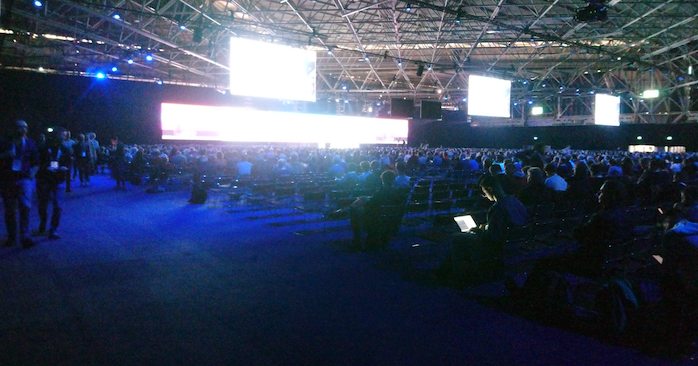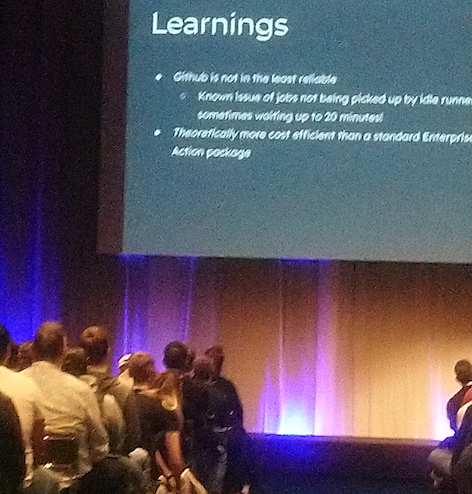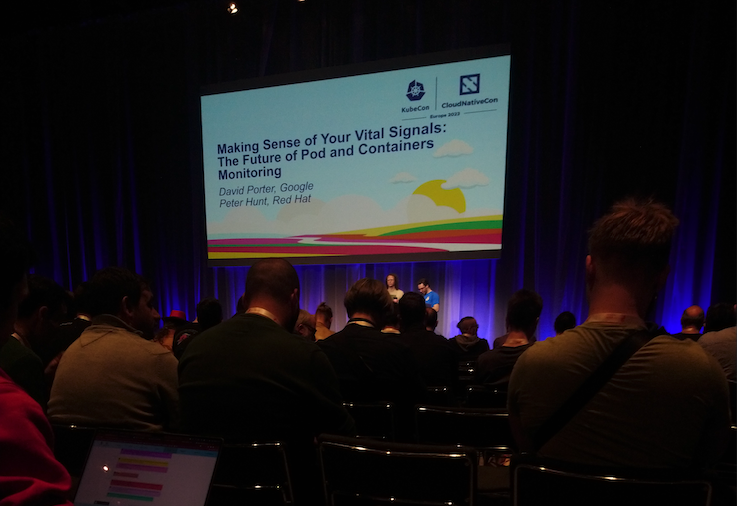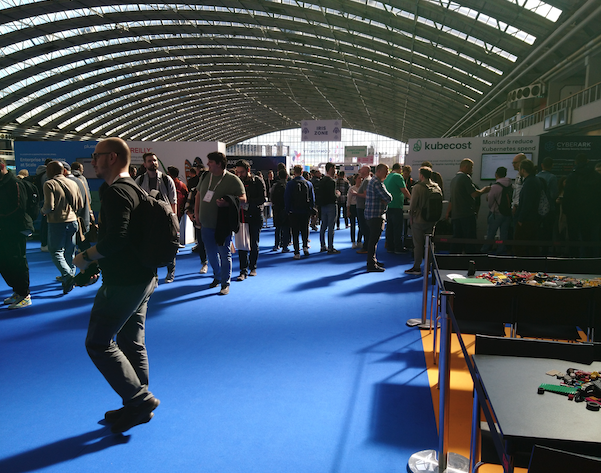Kubecon Amsterdam – Day 1
Our colleague Ward went to Kubecon in Amsterdam. Curious on what Ward experienced on Day 1? Ward describes his experience and talks he attended. Worth the read!
The summit of the Kubernetes and Cloud Native industry, Kubecon, took place this year from the 18th until the 21st of April in Amsterdam, the Netherlands.
Countless professionals from open sources communities and companies come together at Kubecon to spend three days discussing Cloud, Containers and Kubernetes.
Disclaimer: I am a DevOps engineer, not a photographer, excuse me for the bad image quality.
Morning
First thing in the morning, going to pick up my badge! These days you have to assemble your own badge, but I am a computer guy, and particularly bad with folding paper, so luckily a friendly hostess, who seemed expert in folding, helped me out.
Next, I went for a coffee and got myself seated in the conference room where the Keynotes would be taking place shortly. The room was enormous, I was quite impressed by it. However, the speeches themselves were a bit to shallow to my taste. A lot of people passed on stage during a good hour divided in 10 minute skits, which made it hard to understand the common theme.

The main takeaways from the Keynotes? The cloud business has still increasing potential and oportunities, but customers are becoming more experienced, so naturally they are becoming more concious about their cloud spending (finOps) and security posture (DevSecOps).
When the Keynotes where finished, I decided to walk to Hall 7, Room A to listen to Claudia Beresford from Weaveworks(1). This was a fine talk about the possible usecase of MicroVMs, a technology that claims to be (almost) as fast as containers, but secure like a traditional VM (since it has an isolated kernel).
If I understood correctly, the focus is to shorten start-up time as much as possible, so that MicroVMs can compete with containers.
To demonstrate this, Claudia brought a cluster of 3 Raspberry Pi’s, on which she would deploy self-hosted Github Actions runners. Unfortunately, Github decided not to play along nicely, which almost failed the demo. Luckily, in the end it worked out fine. To try it out for yourself, look up Liquid Metal.

After the talk I walked around the Solutions hall, where all the cloud software vendors gathered with their stands.
I encountered a friendly guy from Tigera, the company that develops the Calico CNI. It is a premium (as in really good, even when using the free product) CNI with a lot of interesting features (like global network policies, intrusion detection and more). A bit further down I spoke to the people from AquaSec, the company that develops Trivy and Kube-bench, two really good cluster security tools.
Something that catched my eye was the HAProxy Ingress. If you don’t know HAProxy, it is a very reliable, feature rich load balancer. I have been using HAPRoxy for many years, and it has never let me down. However, I have never used it as an ingress controller, so I am really excited to try it out!
Lunch
To be fair, the lunch provided at Kubecon was decent, but the offerings of the bars and bistro’s in Amsterdam was even better. Close to the congresshall, there was a very cute bar where you could have a tradionial Dutch lunch. Unfortunately I was so hungry I forgot too take a picture :).
Afternoon
I was a bit late for the talk by Joseph Irving from Playstation(2), which was a pity because I was very much looking forward to the talk. Unfortunately the conference rooms were so full, that you had to queue up 30 minutes in advance to be able to get a spot. I learned this the hard way at Kubecon.
Therefore I adjusted my strategy and made sure I was early for the next presentation. I chose to go listen to Felix Hoffman(3), who shared his lessons learned about Kubernetes Requests and Limits. Key takeaway here is to always set Limits for memory, but not for CPU!
When the talk was finished, and I was trying to find the room where the next talk on my list was located, I bumped into the founder of Palark, a DevOps As a Serice company based in Germany. David is a very friendly man, with really intelligent perspective on managed cloud operations.
To end the first day of Kubecon I sat down for a last talk: The Future of Pod and Containers monitoring, by David Porter and Peter Hunt(4). This last talk was very witty and insightful on how Kubernetes gathers and uses metrics for core functions like scheduling and pod scaling.

David and Peter shared with us that there is a big comminity effort underway to make this process simpler and more efficient, by moving away from cAdvisor, and bring this functionality into the container runtime itself. If you like to know more about this in depth, make sure you look up “Kubernetes Enhancement 2371”.
It has been a long day, with lots of insights, bright people and inspiring cloud native solutions. To conclude this day, I went for a dinner in the city of Amsterdam and then returned to the hotel to sleep early.
Links
- A CI/CD Platform in the Palm of Your Hand – Claudia Beresford, Weaveworks
- PlayStation and Kubernetes: How to Solve a Problem Like Real-Time – Joseph Irving, PlayStation
- How to Blow up a Kubernetes Cluster – Felix Hoffmann, iteratec
- Making Sense of Your Vital Signals: The Future of Pod and Containers Monitoring – David Porter, Google & Peter Hunt, Red Hat

